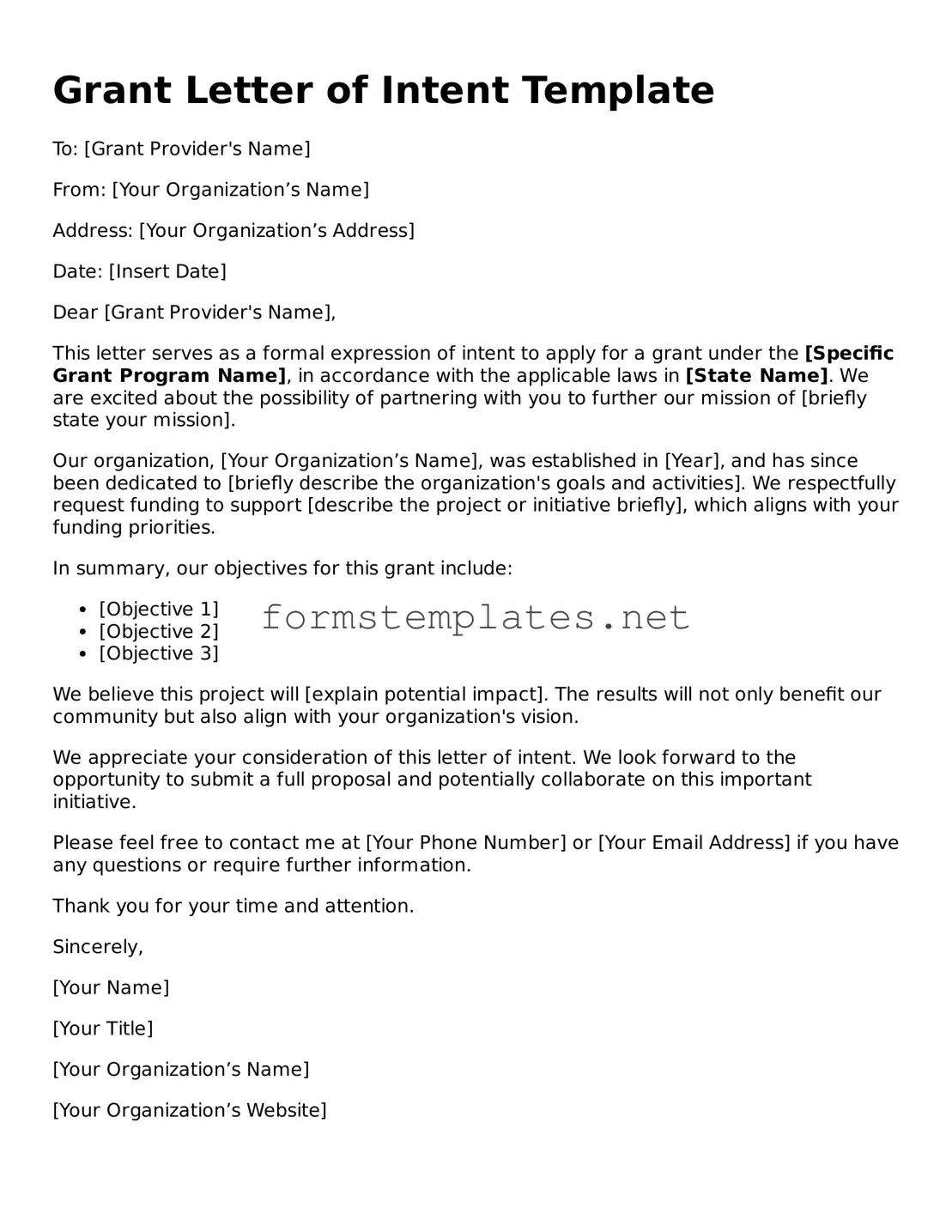Grant Letter of Intent Template
To: [Grant Provider's Name]
From: [Your Organization’s Name]
Address: [Your Organization’s Address]
Date: [Insert Date]
Dear [Grant Provider's Name],
This letter serves as a formal expression of intent to apply for a grant under the [Specific Grant Program Name], in accordance with the applicable laws in [State Name]. We are excited about the possibility of partnering with you to further our mission of [briefly state your mission].
Our organization, [Your Organization’s Name], was established in [Year], and has since been dedicated to [briefly describe the organization's goals and activities]. We respectfully request funding to support [describe the project or initiative briefly], which aligns with your funding priorities.
In summary, our objectives for this grant include:
- [Objective 1]
- [Objective 2]
- [Objective 3]
We believe this project will [explain potential impact]. The results will not only benefit our community but also align with your organization's vision.
We appreciate your consideration of this letter of intent. We look forward to the opportunity to submit a full proposal and potentially collaborate on this important initiative.
Please feel free to contact me at [Your Phone Number] or [Your Email Address] if you have any questions or require further information.
Thank you for your time and attention.
Sincerely,
[Your Name]
[Your Title]
[Your Organization’s Name]
[Your Organization’s Website]
